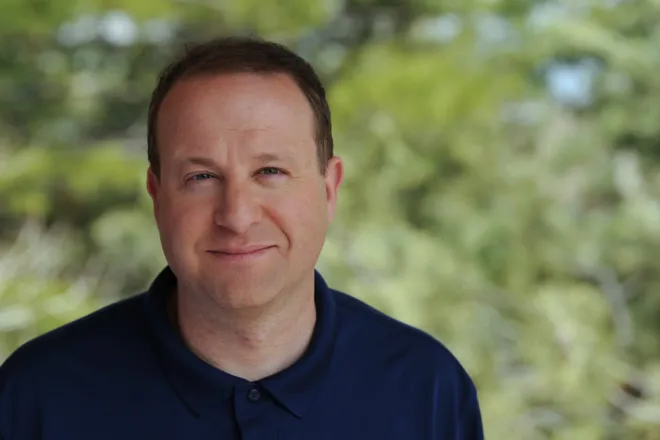
TRANSCRIPT:
[Music] Welcome to the Pasture to Profit podcast.
I'm your host Travis Taylor, livestock extension specialist for the Golden Plains area of Colorado's CSU Extension.
I'm joined today by fellow extension specialist Scott Stinnett who's a livestock and youth agent in Kit Carson County.
Scott, we have a few producers that have started but for most of us we're just starting calving season and it's just around the corner.
Yeah, we've got a few that started here but most of our folks are going to start probably here in March, April and a few into May just because of the way things are here in the High Plains and you know it doesn't really matter if you're going to calve out in that paddock or a dry lot or if you're out on corn stalks or if you're all the way out on pasture.
Kind of a few things we probably ought to start keeping in mind that we want to do.
So if we talk about those few things that we need to do, what are producers needing to do to prepare for calving season?
Well, I think for us the first thing is we probably better check all our supplies and get them gathered up.
There's no nothing worse than needing some supplies whether it's you're looking for that sled to bring the calf in on or you need some pulling chains and you don't know where they're at and you remember where they were but they're not there anymore.
So let's get all our equipment gathered up.
Along with that, let's go ahead and call our vet and because now most of our antibiotics that we might need to use during calving season are under a script due to new federal regulations.
So let's contact our vet.
Let's get what we need to have on hand and make sure that the vet even knows when we're going to be calving.
So if we have a bigger need for the vet, they're going to be available.
I also like to go ahead and call the calving crew.
You know, we, you know, if it's just the family ranch, you know, that may be great.
Maybe got some high school, junior high, high school aged kids, but you better start looking at the schedule and see who has basketball games or a wrestling tournament or anything else that's going on and, you know, make sure that the crew's ready.
You know, if it's your business partners, you know, who's the calving crew, who's going to take what times, you know, who's going to get some sleep when, you know, get the people gathered up.
That's a pretty important thing.
And then I like to go out and make sure where we're going to calve is nice and clean and ready for the cattle.
You know, do we need to do a little fence repair so we don't lose a newborn calf out of the fence?
Do we need to get that trash and those old pieces of equipment, old wire, you know, maybe even go through with a harrow and knock the old manure down?
You know, make sure we got a nice clean environment that's safe for the cow and the calf.
And finally, if we're going to calve, we're going to need to move those cattle to a calving location.
Maybe it's closer to the house or closer to the barn.
Let's go ahead and move those cattle now.
Let's not move them when it's just a day or two before they're supposed to calve, because that's usually when we wind up having a surprise out there.
And next thing you know, we're moving some pairs along with bred cattle.
So those are things I'd kind of suggest that people need to remember and think about before calving starts.
Yeah, I know dealing with my dad, the sunflowers had come so tall this last year that we put all the bred cows out a couple weeks early in the calving trap to knock them down.
So we don't run over a calf when we're out tagging or just checking cows as we go there.
So and as far as the facilities, I also make sure that my head gate's not rusted, and I've got it oiled up and it's prepared to utilize when it comes to having any calving problems when I go to catch them.
So those things are important to me.
With that being said, can you kind of go through what the stages of labor are when we have these cows calving?
We kind of break calving into three stages.
Stage one, you know, scientifically, it's the cervical dilation, but it's labor.
We start seeing labor in our cows.
The calf is sending the signal to the cows, the cortisol is starting to run through the system, we're starting to get those abdominal pushes of labor.
And so we'll start seeing these cows going into labor.
You know, some behavioral signs, we may see that they're starting to separate themselves from the rest of the group.
We may also see that they're starting to ring their tail, maybe they're just uncomfortable, they're getting up, they're getting down.
They're just looking a little off and not wanting to hang with the group, they're getting ready to calve, they're having some signs of labor.
And so this kind of comes to the end of stage one, we start seeing maybe the presentation of that amniotic sac, that membrane that's going to come out the water bag, so to speak, a lot of people use the term, and we'll see that coming out of the vulva and starting to appear.
And we know that we're in labor and we're getting close to the end of labor where we're going to go into stage two, which is the actual delivery of the calf, the calf being born.
And that starts when we get a rupture of that membrane, and we've got that fluid that the calf's been floating around in there for the past 280 plus days.
And now we're going to start seeing the presentation of the calf.
And hopefully our delivery if we've got some good running age mature cows that have had some calves before, its delivery is going to take, you know, somewhere around 30 minutes or so.
Some of your cows, you get them bred to good calving ease bulls and they're large framed and can handle it really easy, really experienced, they may have that calf in 10-15 minutes from when water breaks.
You know, if they're not or they're having a little trouble, maybe the calf's a little bit bigger than we would expect.
You know, we're maybe pushing 45 minutes.
On our heifers, 30 minutes to an hour is not unheard of.
We would consider that normal kind of presentation delivery for them to get a calf on the ground.
And then we'll go into stage three, which is after the calf is actually delivered on the ground.
We start looking into stage three, which we kind of consider postpartum stage of delivery.
And so we're going to see things like, you know, we want to see that the calf has got its head up, it's alert.
You know, if we're, you know, if we're out checking our calves, you know, make sure they don't have that membrane over their nose or their mouth so they can breathe, you know, making sure the cow is being a good mama, you know, is she turned around, is she, you know, nuzzling on them, licking on them, trying to get them cleaned up, you know, paying a lot of attention to them.
You know, maybe our heifers make sure they actually find their calf and know it's their calf, you know, that's always a fun thing.
Try to get those new moms to figure out what it's like to be a new mom.
But the last thing we're kind of looking for is expulsion of the, that placenta, that afterbirth.
You know, we may see it hanging out from underneath the tail out of the vulva for a time.
At CSU, Dr. Tim Holt here is kind of our expert speaker on calving, and all those things that go along with it, and he'll tell you, you know, 12 hours or less is how long they should hang on to that.
You know, some of the old advice used to be things like, we're going to take a OB glove, fill it with water, and we're going to tie it to that membrane to make sure it comes on out.
Some of those things aren't recommended anymore.
If you talk to your vets, our vets here on campus are the same way.
But a lot of times we may never even see the afterbirth.
You know, if we get out there, the calf is born, we come back, she'll pass the afterbirth, and then cows do what they do to make that afterbirth disappear.
We'll never know.
But we want to make sure that that afterbirth is passed because if it's retained, we're going to have some pretty serious issues.
Well, that, I think that provides us with a lot of good information.
But one of the questions I think that a lot of us have, and I know particularly my dad and I argue about it back and forth is, when should we actually intervene?
We know if we've got a malpresentation or a dystocia with one foot back or only a head or the toes are pointing up to the sky, and we've got a calf coming backwards, it's a little different than if the toes are pointed down to the ground in a normal presentation, we need to intervene.
But on a regular calving situation, when should a producer intervene?
Well, let's start with, you know, one extra caveat.
And that's just where are we calving at?
You know, if we're up by the barn where we've got resources like the head gate and the corrals and all that, where we can, you know, got a cow that's having some problems, we can just move her right on in there.
And you know, we have facilities we can use, that's great.
You know, if we're out on the pasture on the corn stalks, we're gonna have to, you know, pull the cowboys in and we're gonna have to get this girl maybe under some stress, maybe have to throw a rope around her or something to help her out.
That's a different deal.
So let's got to consider your situation there too.
If we're having normal presentation, where we've got, you know, the two front feet and the nose are present, what we consider and something that's maybe a slow delivery is anything that's taking progress that's more than 15 minutes.
You know, every 15 minutes, we don't see a little bit more of that calf coming out, a little bit more coming out every 15 minutes, then we're not making progress at all.
And so if we're not making progress, it's probably time that we need to intervene.
You know, it could be a first calf heifer that's just, she doesn't know what to do.
She's trying not to push because pushing hurts.
Or it could be an older cow that she's just maybe, you know, can't push as hard as she used to.
So maybe they just need a little bit of help.
Other things that, you know, mild presentations, it doesn't matter whether it's, you know, we've got one leg back or we're coming out backwards or appear to be coming out upside down.
Probably the earlier you can intervene, the less likely we are to have stress and possible, you know, damage to the birth canal and all the reproductive organs, you know, with these calves that are in dystocia with bad presentations.
If you're experienced, you know, some of them can be relatively simple to fix, you know, if it's a normal presentation with the exception of one leg back.
Well, we want to get to that as soon as possible.
We don't want to see that they've got one whole leg and all their heads already out.
When we could have gone out there and worked on that problem when it was just, we're seeing the one front toe and one nose.
But some of these others, yeah, once we see it, we need to intervene pretty quickly.
So I, you know, that's our advice is, you know, if you can't, if you are not experienced, you don't feel comfortable to it, this is why you've contacted that vet telling them when you're going to calve so you can make that phone call and say, hey, we need assistance.
Well, Scott, I think that's good.
And I think that wraps up this session of our Pasture to Profit podcast.
If you have any questions on this calving topic or a suggested topic you would like discussed on the podcast, call us at our extension offices.
Travis can be reached at Yuma County Extension Office at 970-332-4151.
And Scott?
Yep, I'm here at the Kit Carson County Extension Office in Burlington.
Just call 719-346-5571.
Thank you for listening and join us on our next Pasture to Profit podcast.
[Music]







